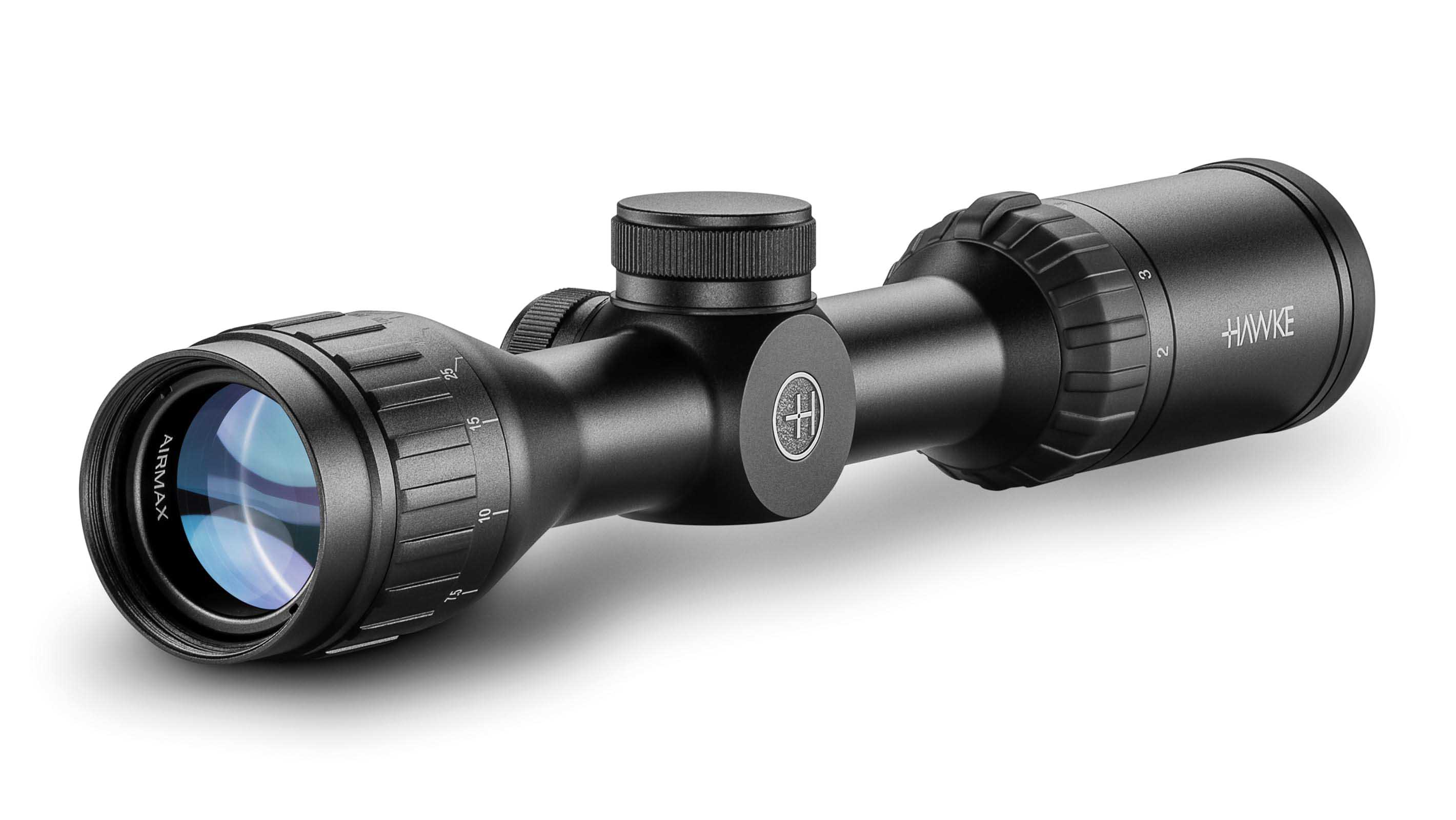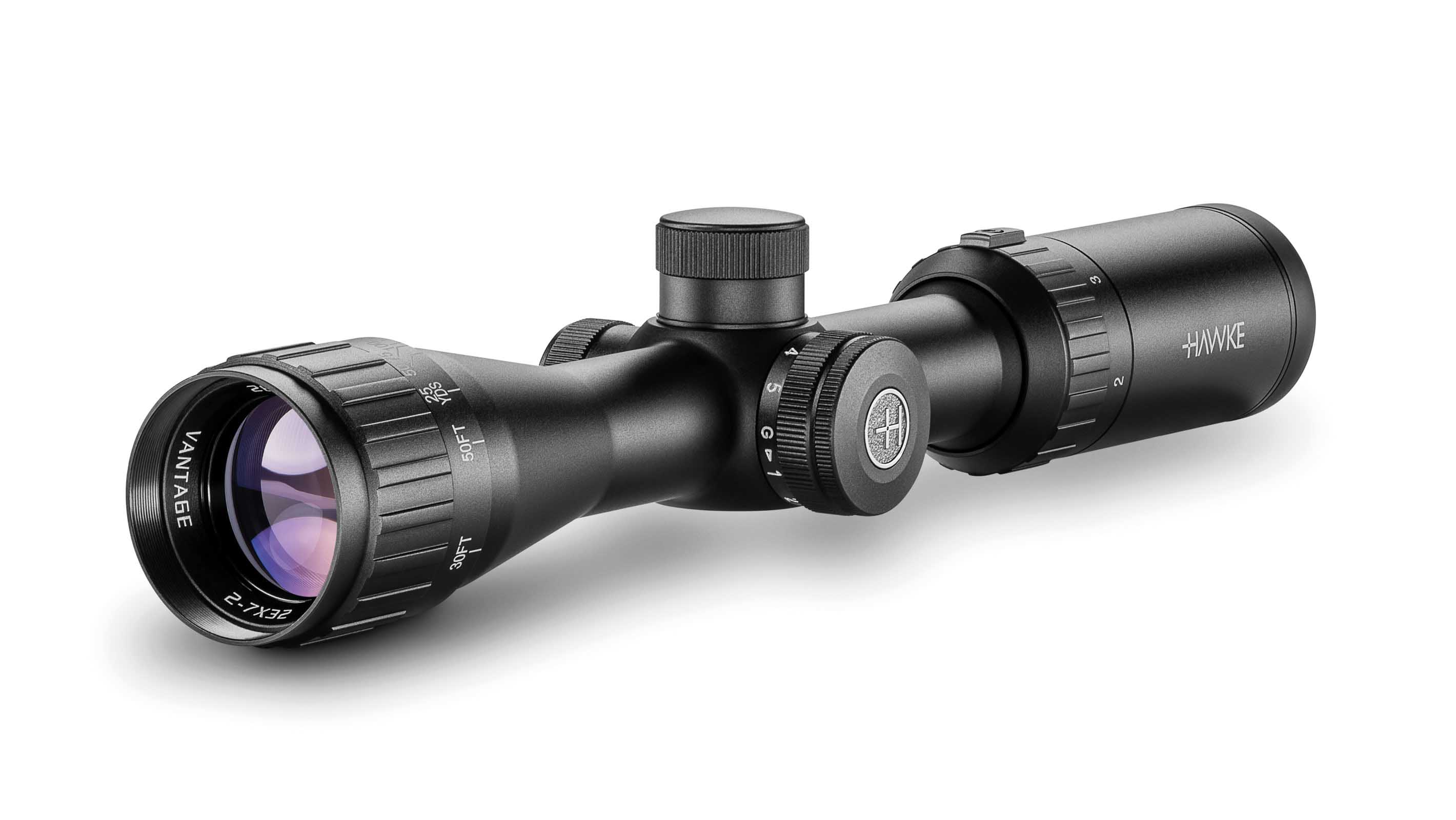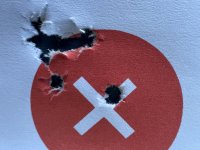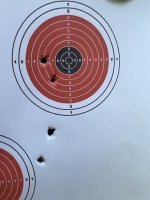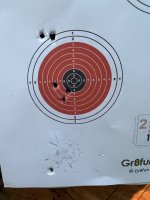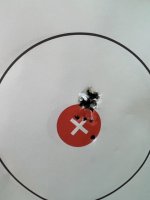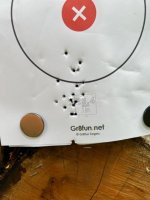Three weeks ago I posted my first thread on AGN about accuracy problems with a RWS 34 .177. Eventually with suggestions from AGN members I tracked it down to a failed 3-9x UTG Bugbuster scope that was probably 15 years old or so. I sent the scope back to Leapers and they determined it was indeed faulty and offered me a credit on their site since that specific model/part number is out of production. Fair enough, I guess.
The old scope was vertically stringing. First few shots very low, next few a bit higher, next few a bit high, then a nice group at X. I'd set the rifle aside for a bit and the pattern would repeat when I picked it back up. It was very predictable. Made sure all fasteners were tight, etc. I also replaced the breech seal just as a precaution. A member here suggested that the elevation turret spring had failed. Leapers never told me what they found, only that they agreed it did not work properly. I suspect they duplicated my result and junked the scope without further analysis.
I like the features of the Bugbuster including parallax adjustment from 3 yards, lighted reticle and 3-9X. It is supposedly rated to handle airgun recoil and it did last 15 years of sporadic use of maybe 1000-1500 shots. I got a new model of the same scope from a mail order house and mounted it. I quickly found zero and since then used it for about 400 pellets, specifically 7.87 grain Diabolos that the gun seems to favor. I did not use a drop compensated mount so I had to raise the elevation significantly to match point of aim and impact, but I did not run out of elevation. I use a UTG Offset Airgun Mount for reduction of eye relief distance.. I'll add here that I store and carry the rifle in a padded hard case. I am the only user since the new scope and it has not been dropped or significantly jarred in any way.
Last night I had the rifle out for target practice and the vertical stringing suddenly reappeared. Same pattern. After 400 tightly grouped perfect shots the new scope failed exactly as the old one had. I had another shooter confirm the results last night and I shot it again this morning with the same pattern continuing. Although it was redundant, I pulled the scope and fired several groups with iron sights. No vertical stringing without the scope, same as last time.
What can I do to solve this problem? Is the infamous springer recoil somehow worse in my rifle? Does the UTG scope suck? Is the mount inappropriate? Something else?
Is there another scope that might be more durable that is similar? For my shooting needs It would have to be parallax free from about 5 yards at minimum. I could live without the lighted reticle if a had to, but I find it very useful for pest control in low light. Unfortunately my eyes are no longer good enough for consistent results with the iron sights. My rifle does not have the newer fiber optic sights. My preferred budget is around $150, same as the Bugbuster. I am willing to get a new mount on top of that if the mount is an issue.
I have found references to the Diana ZR mount, but it reviews are highly variable. AGN has a thread about modifying it to work effectively. I am reluctant to purchase something that I'd have to modify to begin with. I am no machinist.
I have looked around at scopes/mounts but the I'd like advice from real world users who have solved this problem already if possible. Any help would be much appreciated.
The old scope was vertically stringing. First few shots very low, next few a bit higher, next few a bit high, then a nice group at X. I'd set the rifle aside for a bit and the pattern would repeat when I picked it back up. It was very predictable. Made sure all fasteners were tight, etc. I also replaced the breech seal just as a precaution. A member here suggested that the elevation turret spring had failed. Leapers never told me what they found, only that they agreed it did not work properly. I suspect they duplicated my result and junked the scope without further analysis.
I like the features of the Bugbuster including parallax adjustment from 3 yards, lighted reticle and 3-9X. It is supposedly rated to handle airgun recoil and it did last 15 years of sporadic use of maybe 1000-1500 shots. I got a new model of the same scope from a mail order house and mounted it. I quickly found zero and since then used it for about 400 pellets, specifically 7.87 grain Diabolos that the gun seems to favor. I did not use a drop compensated mount so I had to raise the elevation significantly to match point of aim and impact, but I did not run out of elevation. I use a UTG Offset Airgun Mount for reduction of eye relief distance.. I'll add here that I store and carry the rifle in a padded hard case. I am the only user since the new scope and it has not been dropped or significantly jarred in any way.
Last night I had the rifle out for target practice and the vertical stringing suddenly reappeared. Same pattern. After 400 tightly grouped perfect shots the new scope failed exactly as the old one had. I had another shooter confirm the results last night and I shot it again this morning with the same pattern continuing. Although it was redundant, I pulled the scope and fired several groups with iron sights. No vertical stringing without the scope, same as last time.
What can I do to solve this problem? Is the infamous springer recoil somehow worse in my rifle? Does the UTG scope suck? Is the mount inappropriate? Something else?
Is there another scope that might be more durable that is similar? For my shooting needs It would have to be parallax free from about 5 yards at minimum. I could live without the lighted reticle if a had to, but I find it very useful for pest control in low light. Unfortunately my eyes are no longer good enough for consistent results with the iron sights. My rifle does not have the newer fiber optic sights. My preferred budget is around $150, same as the Bugbuster. I am willing to get a new mount on top of that if the mount is an issue.
I have found references to the Diana ZR mount, but it reviews are highly variable. AGN has a thread about modifying it to work effectively. I am reluctant to purchase something that I'd have to modify to begin with. I am no machinist.
I have looked around at scopes/mounts but the I'd like advice from real world users who have solved this problem already if possible. Any help would be much appreciated.
